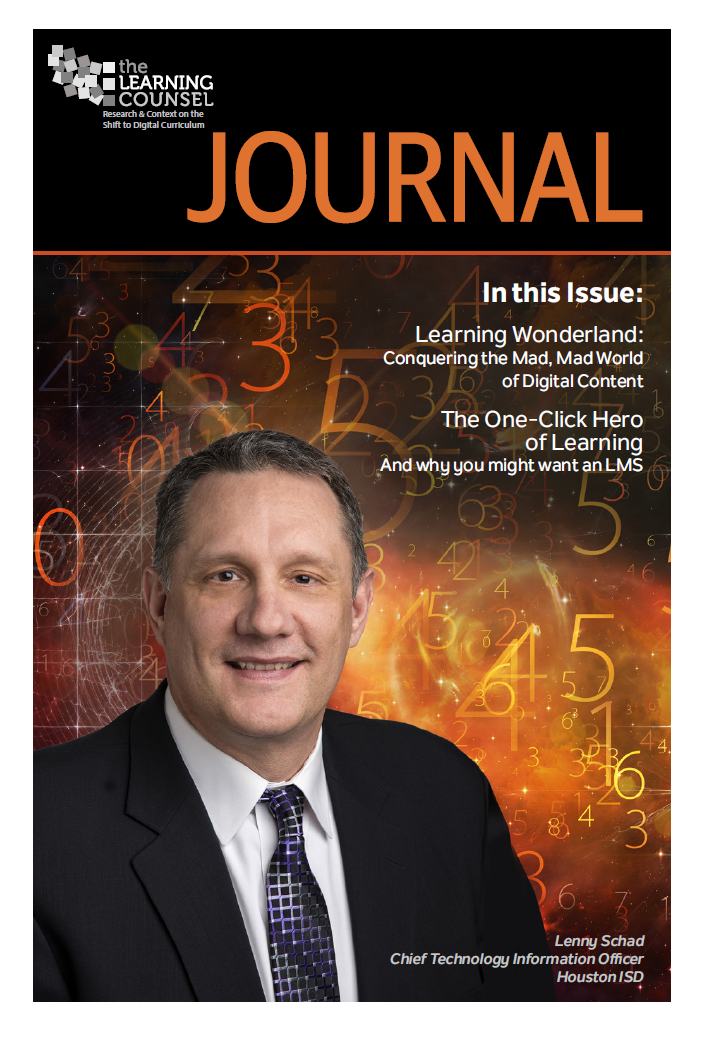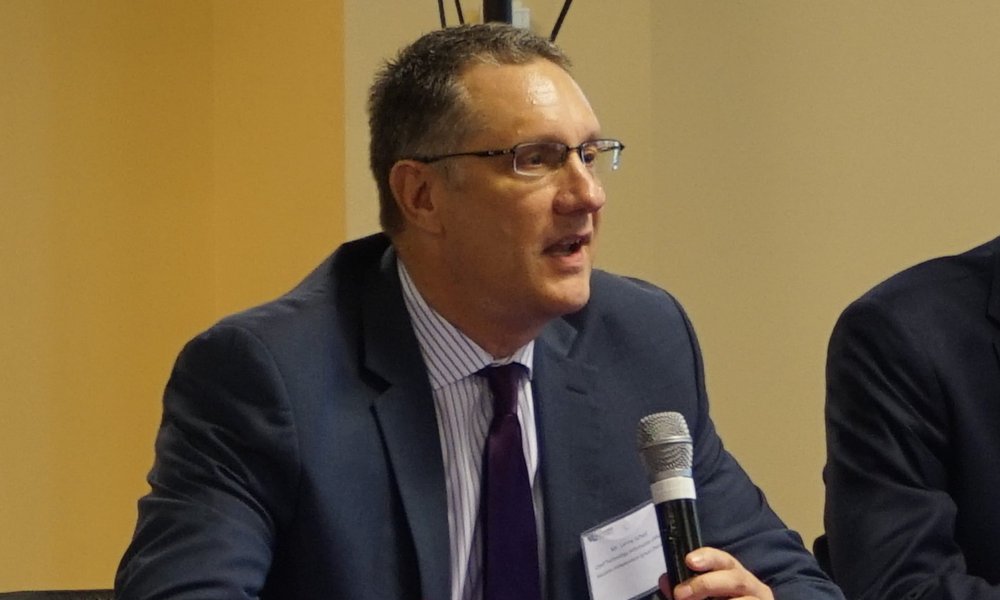Interview several very different district technology leaders about how they are transforming their systems and a very common question will emerge: how they are solving digital curriculum curation and classroom delivery in a chaos of hundreds of publisher options and thousands of digital courses and resources?
Technology today is a support mechanism to teaching and learning. The more tech can be ubiquitous, complimentary and invisible to the users, the better.
The Learning Counsel interviewed Mr. Lenny Schad, the Chief Technology Information Officer of Houston ISD to find out how he is confronting transformation and to get a view of the innovative solutions his team has deployed.
The Houston Independent School District is the largest school district in Texas and the seventh-largest in the United States. It serves approximately 215,000 students at 283 campuses. Houston no longer buys textbooks. Their curriculum content is delivered digitally. It is housed within their learning management system which is accessed by teachers, administrators, students and parents, 24 hours a day, 7 days a week.
Houston kicked off their digital transformation initiative in January of 2013 when Lenny Schad arrived as the Chief Technology Officer. (He is now the Chief Technology Information Officer) “I was only there for a few weeks and the Superintendent pulled me in and told me he wanted to kick off a technology transition initiative,” Schad told the Learning Counsel. “He said he would like to put laptops in every high school for every student.” Planning began and Lenny developed what a digital curriculum initiative would look like for Houston.
Preparing Infrastructure—Phase One
Beyond just devices, they knew from the beginning the district had to have an infrastructure capable of supporting 60,000+ kids, every one of them having a device in a high school (as the first target). “We immediately started to look at our overall network design. We started to focus heavily on our wireless infrastructure and really started to evaluate what our readiness-state was in order to kick-off an initiative like that,” stated Schad.
Based on their first evaluations of the network capability, they scaled the first phase to complete within three years. “That first year we deployed to eleven campuses, the next year we deployed to twenty-two and the third year, which is the year we just completed, we finished out the high schools.” Achieving those completions and the year by year expansion of deployment was predicated on the individual campus readiness from an infrastructure perspective. Lenny told us that the technology department knew full well that success for digital transition was going nowhere without the infrastructure and network in place to be able to carry the demands from students, teachers and administrators.
“Each year we increased our bandwidth, but just bandwidth wasn’t the biggest concern,” stated Schad. “Where we spent the brunt of our time, honestly, was in our wireless infrastructure, making sure that we had access points in every classroom, making sure that we had the throughput to those classrooms.”
They also spent a lot of time reviewing their filtering, their virus protection. Lenny told the Learning Counsel those will be the typical bottleneck points. Bandwidth can seem like the thing, he told us, but it’s really not. “Bandwidth you can increase in the blink of an eye and every time you increase it, you’re going to max it out the next day,” he said. “If you think the answer is just simply add bandwidth to the problem, you’re never going to be at a point where you’re meeting the need.”
Houston stepped back and looked at the layers within the network that they predicted were going to create that bottleneck. For them, it was about four key factors:
- Wireless
- Filtering
- Segmentation
- Routing
Schad reiterated that they had to look at their segmentation, how they were routing traffic and what traffic goes through their filters and what traffic doesn’t need to go through those filters. “I’ll tell you, now, three years into this, where we have had significant issues on our network, it has all come back to our filtering; do we have enough filtering? Do we have enough virus protection boxes out there? Because those are the things that are chunking-through every piece of information.”
In three years they built a solid infrastructure to carry the system and any deployment of devices and digital curriculum.
What Are Your Biggest Bandwidth Issues?
Houston spent a lot of time managing what they were granting access too, both from their student perspective and from their teacher perspective. They reviewed what was using the most bandwidth on the network to find the inefficiencies. “We looked at utilization of our network – what were the top 25 sites being visited? Were they education-relevant? If those sites are not education relevant then we were figuring out how to block them, re-route them, give them less percentage of bandwidth.”
Schad told the Learning Counsel that it is less about that bandwidth pipe out to the internet and more about how you’re utilizing and managing the pieces. “It’s interesting because I’ve had a lot of conversations with people about this,” he told us. “Most people seem to think that bandwidth is the holy grail. One of the first questions I get is ‘How much bandwidth do you have?’ and when I tell someone how much bandwidth we’re using, they kind of look at me like ‘Holy Cow, I would have expected it to be three times that amount!’”
The reason it’s not three times that amount, Lenny told us, is because Houston ISD’s tech team believes it’s more in the brick-and-mortar of true network architecture, network care-and-feeding, network forecasting. A lot of looking at reports and trends and what do they need to do to proactively manage this massive amount of traffic they have going in every direction.
Honest Assessment—Look! Don’t Assume!
Another point Schad relayed, something he felt key in doing this type of massive transformation for digital, is good partnerships during their initial studies of what they had.
Houston had to set aside assumptions. They are big. They have an awesome network and systems. But they needed to get real and take stock at the outset of what Lenny termed “our real-true-as-is state.” He pointed out that a lot of times there are a tremendous amount of assumptions being made about your current state and current capabilities. If you begin to act on that without a good third party review, and if your foundational assessment is wrong, then you’re building a house of cards. 
“We wanted to make sure that we had a true as-is state so that whatever we were doing in the future we could add to,” stated Schad. “Our partnerships in this were a key strategic factor to make sure we build a strong foundation.”











